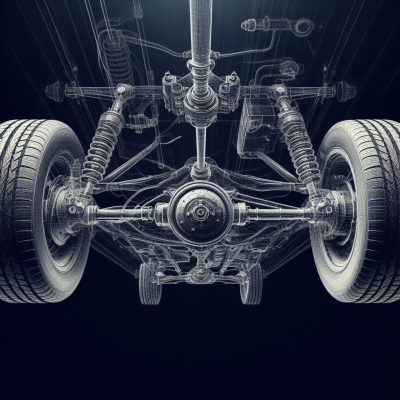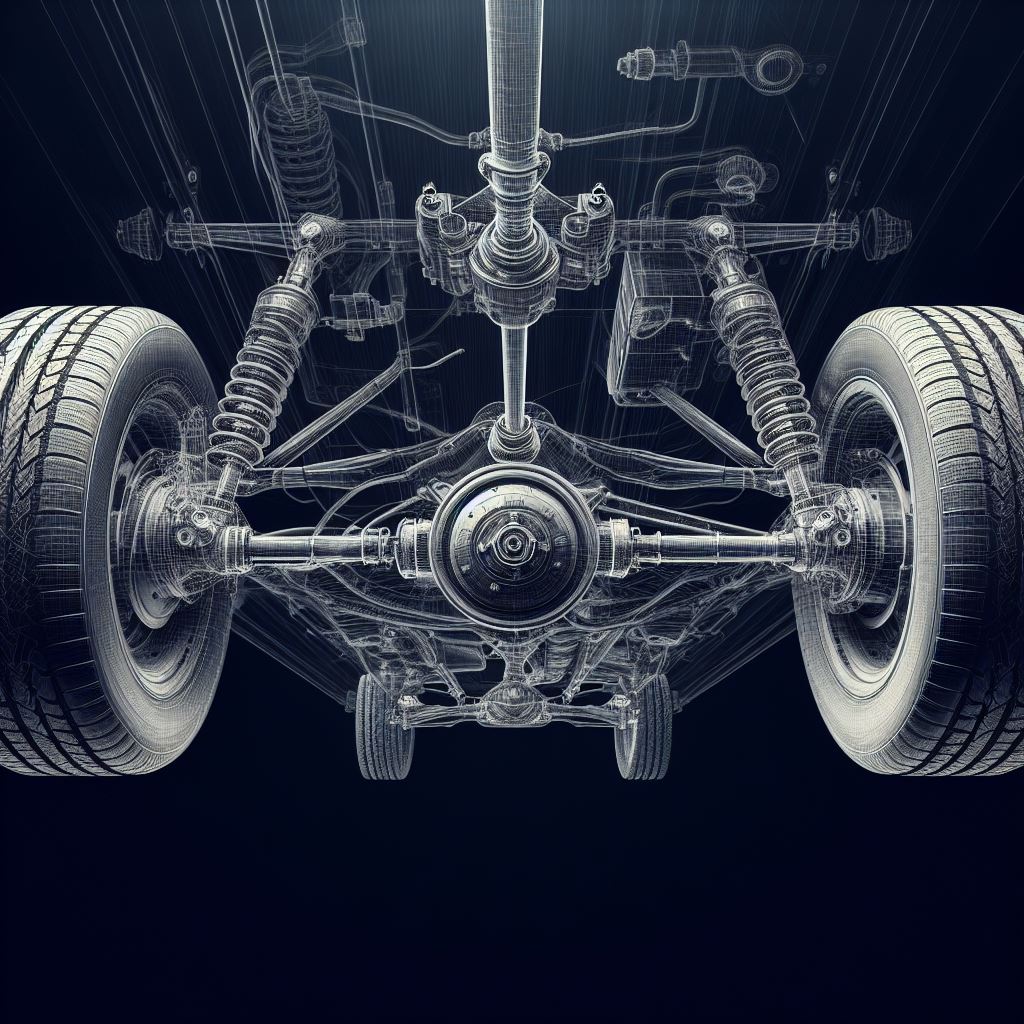Have you ever wondered how many axles your car has?
Well, get ready to have your mind blown! In this article, we’re diving into the fascinating world of axles and their vital role in your vehicle’s operation.
Axles are the connective powerhouses that control the wheels, allowing your car to move with ease. From live axles in trucks to dead axles in passenger cars, we’ll uncover the secrets behind how many axles your car needs to keep you on the road.

Key Takeaways
- Every vehicle has to have axles in order to operate.
- The two main types of axles are live axles and dead axles.
- Live axles are used in rear-wheel drive vehicles, while dead axles are used in front-wheel drive vehicles.
- Axle maintenance and repair are crucial for the longevity of the axles.
Types of Axles Used in Cars
Now, let’s discuss the different types of axles used in cars, including rear axles, front axles, stub axles, Elliot axles, and Lamoine axles.
Rear axles are responsible for delivering power to the driving wheels, while front axles assist with steering and process shocks from the road.
Stub axles are attached to the front wheels and provide stability. Elliot axles use a kingpin, yoke, and cotter to connect to the front axle, while Lamoine axles have an L-shaped spindle instead of a yoke-type hinge.
These axle types vary in design and functionality, allowing for different handling characteristics and performance.
Understanding the different types of axles used in cars is essential for maintenance and repair, ensuring your vehicle operates smoothly and safely on the road.
Different Rear Axle Configurations
To understand the different rear axle configurations, you should consider the benefits of each design. There are three main types of rear axles: semi-floating, full-floating, and three-quarter floating.
A semi-floating axle connects the wheel to the exterior of the axle shaft. It’s commonly found in light-duty vehicles and provides a good balance between strength and cost.
A full-floating axle, on the other hand, floats in place and transmits driving torque. It’s often used in heavy-duty trucks and provides maximum strength and durability.
Finally, a three-quarter floating axle maintains wheel alignment and handles thrust and torque. It’s commonly used in medium-duty trucks and offers a good balance between strength and cost.
Understanding these different rear axle configurations can help you choose the one that best suits your vehicle’s needs.
Various Front Axle Designs
You should explore the advantages and disadvantages of different front axle designs before making a decision.
The front axle plays a crucial role in steering and handling, so it’s important to choose the design that best suits your needs.
There are two main types of front axles: dead front axles and live front axles.
Dead front axles stay in place and don’t rotate with the wheels, while live front axles deliver driving power from the gearbox to the front wheels.
Dead front axles provide better handling and comfort, but live front axles offer more traction and power.
Consider factors like terrain, vehicle type, and intended use before deciding which design is right for you.
Proper exploration and understanding of different front axle designs will help you make an informed decision.
Importance of Axle Maintenance
If you neglect regular maintenance, the axles can develop issues that may lead to costly repairs. Axle maintenance is crucial for ensuring the longevity and performance of your vehicle. Regularly checking and changing the axle fluid as recommended by the manufacturer is essential.
Damaged or worn-out axles should be promptly replaced to prevent further damage to other components. Common axle repairs involve replacing bearings, seals, or damaged parts. It’s important to choose the right axle material based on your vehicle’s intended use and performance requirements. Axles can be made of steel, aluminum alloys, or carbon fiber.
Materials Used for Car Axles
When discussing the materials used for car axles, steel is commonly chosen for its strength and durability, while aluminum alloys offer a lighter option.
Steel axles are known for their ability to withstand heavy loads and provide excellent durability, making them the preferred choice for larger vehicles like trucks and SUVs.
On the other hand, aluminum alloy axles are lighter in weight, which can improve fuel efficiency and handling in smaller cars and compact vehicles. Although aluminum alloys may not be as strong as steel, they still offer sufficient strength for everyday driving conditions.
Ultimately, the choice between steel and aluminum alloy axles depends on the specific needs and performance requirements of the vehicle.
Frequently Asked Questions
How Does the Number of Axles Affect a Car’s Performance?
The number of axles affects a car’s performance by determining its drivetrain configuration. More axles provide better traction and load-carrying capacity. Fewer axles offer better maneuverability and fuel efficiency. It depends on the vehicle’s intended use and design.
Can the Type of Axle Used in a Car Be Changed or Modified?
Yes, you can change or modify the type of axle in your car. Depending on your needs and preferences, you can upgrade to a different type of axle to improve performance or make specific adjustments.
What Are Some Common Signs of Axle Damage or Wear?
Common signs of axle damage or wear include unusual noises, vibrations, or shuddering while driving, uneven tire wear, leaking axle fluid, and difficulty turning. If you notice these signs, get your axles checked and repaired promptly.
Are There Any Specific Maintenance Tasks That Should Be Done Regularly to Ensure Axle Longevity?
To ensure axle longevity, regularly check and change axle fluid as recommended by the manufacturer. Promptly replace damaged or worn-out axles. Regular maintenance tasks may involve replacing bearings, seals, or damaged components.
How Do Different Axle Materials Impact a Car’s Weight and Fuel Efficiency?
Different axle materials impact a car’s weight and fuel efficiency. Lighter materials, like aluminum alloys and carbon fiber, can reduce weight and improve fuel efficiency. Steel axles, while heavier, provide strength and durability.
Conclusion
As you journey through the fascinating world of axles, you begin to realize the symbolic significance they hold.
Axles are the unseen heroes, the driving force behind every car. They represent the strength, durability, and smoothness that keep us moving forward.
So next time you hop into your car, take a moment to appreciate the axles that silently carry you on your way. They’re the unsung heroes of the road, keeping us connected to our destination.
